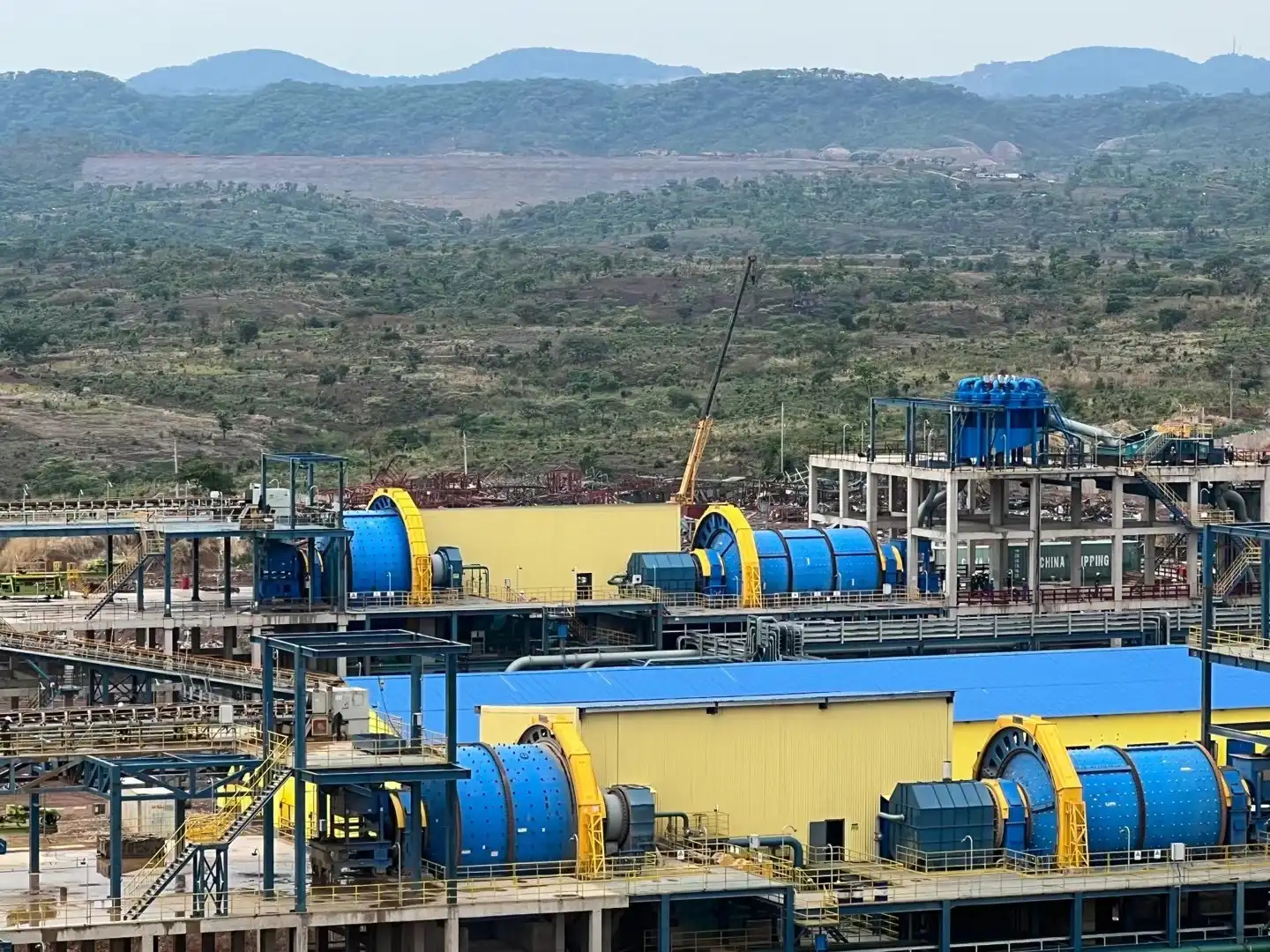High-chrome vs forged steel: Which offers better wear resistance?
When it comes to grinding balls for mining applications, two materials often stand out: high-chrome and forged steel. Both offer excellent wear resistance, but they have distinct characteristics that make them suitable for different scenarios.
High-chrome grinding balls: The durability champions
High-chrome grinding balls, typically containing 10-30% chromium, are renowned for their exceptional wear resistance. The high chromium content forms a protective layer on the surface of the ball, which helps to resist abrasion and corrosion. This makes them particularly suitable for grinding balls mining operations involving highly abrasive ores or corrosive environments.
Advantages of high-chrome grinding balls include:
- Superior hardness and wear resistance
- Excellent performance in corrosive environments
- Longer service life compared to many other materials
- Consistent grinding performance throughout their lifespan
Forged steel grinding balls: The versatile performers
Forged steel grinding balls are produced through a process of heating and shaping steel into spheres. This manufacturing method results in a uniform microstructure, which contributes to their durability and impact resistance. Forged steel balls are often preferred for their balance of hardness and toughness.
Benefits of forged steel grinding balls include:
- Good wear resistance and impact strength
- Cost-effective for many applications
- Suitable for a wide range of ore types
- Consistent quality due to the forging process
While high-chrome balls may offer superior wear resistance in certain conditions, forged steel balls can be more cost-effective for less abrasive ores. The choice between the two often depends on specific operational requirements and economic considerations.
How alloy composition affects grinding ball service life?
The composition of the alloy used in grinding balls can have a profound impact on their service life and performance. Understanding these effects can help mining operations optimize their grinding media selection.
Carbon content: Balancing hardness and toughness
Carbon is a crucial element in steel alloys used for grinding balls mining. Higher carbon content typically increases hardness, which can improve wear resistance. However, it can also make the balls more brittle and susceptible to fracture under high-impact conditions.
Optimal carbon content depends on the specific application:
- Low carbon (0.3-0.5%): Suitable for high-impact grinding, but with lower wear resistance
- Medium carbon (0.5-0.8%): Balances wear resistance and impact strength
- High carbon (0.8-1.2%): Offers excellent wear resistance but may be brittle in high-impact scenarios
Chromium: The corrosion fighter
Chromium is added to grinding ball alloys to enhance corrosion resistance and increase hardness. The amount of chromium can vary significantly:
- Low chrome (1-3%): Provides modest improvements in wear and corrosion resistance
- Medium chrome (5-12%): Offers good balance of wear resistance and toughness
- High chrome (15-30%): Delivers superior wear and corrosion resistance, ideal for harsh environments
Other alloying elements: Fine-tuning performance
Various other elements can be added to further enhance grinding ball properties:
- Molybdenum: Improves hardenability and high-temperature strength
- Nickel: Enhances toughness and corrosion resistance
- Vanadium: Increases wear resistance and helps maintain hardness at elevated temperatures
The optimal alloy composition for grinding balls depends on factors such as ore type, mill conditions, and desired grinding efficiency. Consulting with experienced manufacturers can help determine the best alloy for specific mining operations.
Ceramic grinding balls: When are they worth the investment?
While metal alloys dominate the grinding balls mining industry, ceramic grinding balls have carved out a niche in certain applications. These balls, typically made from materials like alumina or zirconia, offer unique properties that can be advantageous in specific scenarios.
Advantages of ceramic grinding balls
Ceramic grinding balls boast several benefits that make them attractive for certain mining operations:
- Exceptional hardness and wear resistance
- Chemical inertness, preventing contamination of the ore
- Lower density, allowing for higher ball charge and potentially improved grinding efficiency
- Reduced noise levels during operation
Limitations of ceramic grinding balls
Despite their advantages, ceramic balls have some drawbacks that limit their widespread adoption in mining:
- Higher initial cost compared to metal balls
- Lower impact resistance, making them unsuitable for high-energy grinding
- Potential for sudden failure due to their brittle nature
- Limited availability in larger sizes
Ideal applications for ceramic grinding balls
Ceramic grinding balls are worth considering in the following scenarios:
- Fine grinding applications where contamination must be minimized
- Processing of highly abrasive ores that quickly wear out metal balls
- Situations where the chemical inertness of ceramic is crucial
- Operations where the reduced weight of ceramic balls can improve mill efficiency
While ceramic grinding balls offer unique benefits, their adoption in mining operations should be carefully evaluated based on specific operational requirements and economic considerations.
Selecting the right grinding ball material: A holistic approach
Choosing the optimal material for mining grinding balls requires a comprehensive analysis of various factors:
- Ore characteristics (hardness, abrasiveness, corrosiveness)
- Mill operating conditions (speed, ball charge, temperature)
- Desired grinding efficiency and product size
- Economic considerations (initial cost vs. service life)
- Environmental factors (e.g., potential for contamination)
By carefully considering these factors and potentially conducting pilot tests, mining operations can select the most suitable grinding ball material to optimize their mineral processing efficiency and cost-effectiveness.
The future of grinding ball materials in mining
As the mining industry continues to evolve, so too does the technology behind grinding balls. Ongoing research and development efforts are focused on creating new alloys and composite materials that offer even better performance and longevity. Some promising areas of innovation include:
- Advanced surface treatments to enhance wear resistance
- Nano-engineered materials for improved hardness and toughness
- Smart grinding balls with embedded sensors for real-time performance monitoring
- Bio-inspired designs that mimic natural wear-resistant structures
These advancements hold the potential to further optimize grinding processes, reduce energy consumption, and improve the overall efficiency of mining operations.
In conclusion, the choice of optimal materials for grinding balls mining depends on a complex interplay of factors. While high-chrome and forged steel balls remain the workhorses of the industry, ceramic balls offer unique advantages in specific applications. By carefully evaluating their options and staying abreast of technological advancements, mining companies can make informed decisions to maximize their grinding efficiency and profitability.
For expert guidance on selecting the best grinding balls for your mining operation, don't hesitate to reach out to our team of specialists. Contact us at sales@da-yang.com or sunny@da-yang.com to discuss your specific needs and discover how our high-quality grinding balls can enhance your mineral processing efficiency.
References
- Smith, J.A. (2022). Comparative Analysis of Grinding Media Materials in Mineral Processing. Journal of Mining Engineering, 45(3), 287-301.
- Johnson, R.B., & Thompson, L.K. (2021). Advances in High-Chrome Grinding Ball Technology for Abrasive Ore Processing. International Journal of Mineral Processing, 158, 102-115.
- Zhang, Y., et al. (2023). The Role of Alloy Composition in Extending Grinding Ball Service Life. Materials Science and Engineering: A, 832, 142344.
- Brown, C.D. (2020). Ceramic Grinding Media in Mining Applications: A Cost-Benefit Analysis. Mining Technology, 129(4), 200-212.
- Lee, S.H., & Park, J.W. (2022). Innovative Materials for Next-Generation Grinding Balls in Mineral Processing. Advanced Engineering Materials, 24(5), 2100234.
- Rodriguez, M.A., et al. (2021). Optimization of Grinding Media Selection for Various Ore Types: A Comprehensive Review. Minerals Engineering, 170, 107009.









